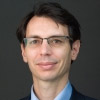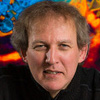Register: Membrane Protein Paris 2024 on Oct. 14
Schedule:
09:00 Opening Comments
 09:10 Bjorn Pedersen, Professor, Dept. of Molecular Biology & Genetics, Aarhus University, Denmark, with a focus on transmembrane transporters
09:10 Bjorn Pedersen, Professor, Dept. of Molecular Biology & Genetics, Aarhus University, Denmark, with a focus on transmembrane transporters
 09:40 Martin Picard, CNRS Research Director, Biochimie des Protéines Membranaires, Institut de Biologie Physico-Chimique, Paris
09:40 Martin Picard, CNRS Research Director, Biochimie des Protéines Membranaires, Institut de Biologie Physico-Chimique, Paris
 10:00 Cathy Etschebest, Professor, DSIMB, INSERM, Paris-Diderot: New insights in the dynamics and functional mechanisms of Potassium Channels brought by molecular dynamics simulations
10:00 Cathy Etschebest, Professor, DSIMB, INSERM, Paris-Diderot: New insights in the dynamics and functional mechanisms of Potassium Channels brought by molecular dynamics simulations
10:20 Coffee Break
 10:50 Chiara Rapisarda, Group Leader in cryo-EM at Sanofi: developing new capabilities to accelerate drug discovery
10:50 Chiara Rapisarda, Group Leader in cryo-EM at Sanofi: developing new capabilities to accelerate drug discovery
 11:10 Philipp Hanisch, Head of Laboratory, Cube Biotech: Next Generation Polymers for the Characterization of Membrane Proteins in Near-Native Conditions
11:10 Philipp Hanisch, Head of Laboratory, Cube Biotech: Next Generation Polymers for the Characterization of Membrane Proteins in Near-Native Conditions
 11:30 Donghui Ma, Founder & CEO, DIMA Biotech: The application of synthetic Nanodisc technology in therapeutic antibody discovery
11:30 Donghui Ma, Founder & CEO, DIMA Biotech: The application of synthetic Nanodisc technology in therapeutic antibody discovery
11:50 Industry Panel Discussion
12:00 Lunch
 13:00 Manuela Zoonens, Senior Researcher, CNRS, Paris & Institut de Biologie Physico-Chimique, Université Paris Cité, with a focus on amphipols
13:00 Manuela Zoonens, Senior Researcher, CNRS, Paris & Institut de Biologie Physico-Chimique, Université Paris Cité, with a focus on amphipols
 13:15 Rebecca Murray, PhD Student, Coventry University and Stellenbosch University: Development of a Novel BRET-Based Assay Assessing the Function of GPCRs Solubilised with SMA and SMA-like Polymers
13:15 Rebecca Murray, PhD Student, Coventry University and Stellenbosch University: Development of a Novel BRET-Based Assay Assessing the Function of GPCRs Solubilised with SMA and SMA-like Polymers
 13:30 Ciara Frances Pugh, PhD Student, U Copenhagen: A novel copolymer for structural determination of human membrane proteins in native nanodiscs
13:30 Ciara Frances Pugh, PhD Student, U Copenhagen: A novel copolymer for structural determination of human membrane proteins in native nanodiscs
 13:45 Lea Hoffmann, Research Assistant, Structural Biology, University of Osnabrueck: The ABC transporter MsbA in a dozen environments
13:45 Lea Hoffmann, Research Assistant, Structural Biology, University of Osnabrueck: The ABC transporter MsbA in a dozen environments
14:00 Coffee Break
 14:30 Amedee des Georges, Associate Professor, Molecular Pathobiology, NYU: deciphering the gating mechanism of RyR1 using temperature-resolved cryo-EM
14:30 Amedee des Georges, Associate Professor, Molecular Pathobiology, NYU: deciphering the gating mechanism of RyR1 using temperature-resolved cryo-EM
 14:50 Claire de March, Assistant Professor, CNRS, Institute of Chemistry of the Natural Substances, University Paris Saclay, studying olfactory receptors
14:50 Claire de March, Assistant Professor, CNRS, Institute of Chemistry of the Natural Substances, University Paris Saclay, studying olfactory receptors
 15:10 Daniel Capelluto, Associate Professor, Virginia Tech: Mechanisms of regulation of endosomal cargo transporters
15:10 Daniel Capelluto, Associate Professor, Virginia Tech: Mechanisms of regulation of endosomal cargo transporters
 15:30 Leonid Sazanov, Professor, Institute of Science and Technology Austria: Structures and coupling mechanism of respiratory complex I, a huge molecular machine
15:30 Leonid Sazanov, Professor, Institute of Science and Technology Austria: Structures and coupling mechanism of respiratory complex I, a huge molecular machine
15:50 Open Discussion
16:00 Networking Reception
17:00 Close of meeting
Membrane Protein Paris 2024 is being co-organized with APPICOM and ISC-PIF, and brings together scientists from disciplines including biochemistry, biophysics, polymer chemistry, and chemical, molecular and cell biology in order to discuss the latest developments related to biological membranes.
We'll explore structures and interactions of memteins as well as methods for extracting and stabilizing membrane complexes such as SMA and related copolymers, scaffolds, saposins, peptidiscs, and native vesicles has driven progress in this growing field.
The advances rely on novel agents that fragment membranes into water-soluble nanodiscs, allowing the complex native structures and interactions found in vivo to be discerned without the scrambling and destabilization caused by conventional detergents.
New tools and models for discerning how membrane zones form and operate across cellular and evolutionary spaces provides insights into structures and functions of organelle and organ systems, as well as guiding biomarker and drug discovery.
The Membrane Protein Paris 2024 conference will be at TOTEM, ISC-PIF.
Co-organizers:
- David Strobel, Institut de Biologie, Ecole Normale Supérieure de Paris
- Ewen Lescop, CNRS Research Director, ICSN, Université Paris-Saclay
- Guillaume Lenoir, Assistant Professor & LPSM Group Leader, University Paris-Sud
- Isabelle Mus-Veteau, CNRS Research Director, IMPC, Sophia Antipolis, France
- Martin Picard, CNRS Research Director, BPM lab at IBPC, Paris
- Michael Overduin, Director, SMALP Network
- Vincent Chaptal, Molecular Microbiology & Structural Biochemistry, APPICOM Director
SMALP Conference on June 18, 2024: Videos
 Garth Nicolson, President, The Institute for Molecular Medicine on the updated Singer-Nicolson Fluid-Mosaic Model of Cell Membranes
Garth Nicolson, President, The Institute for Molecular Medicine on the updated Singer-Nicolson Fluid-Mosaic Model of Cell Membranes
 Adam Evans, PhD student with Tim Dafforn at U Birmingham, on Optimising the Purification Process: Exploring Affinity Resins and Polymer Combinations using the RePol Screen.
Adam Evans, PhD student with Tim Dafforn at U Birmingham, on Optimising the Purification Process: Exploring Affinity Resins and Polymer Combinations using the RePol Screen.

 Alex Snow, Postdoctoral Researcher, and Tharushi Wijesiriwardena, Research Technician with Stephen Muench University of Leeds Astbury Biostructure Laboratory on Incorporating SMALPs into a novel cell-free system
Alex Snow, Postdoctoral Researcher, and Tharushi Wijesiriwardena, Research Technician with Stephen Muench University of Leeds Astbury Biostructure Laboratory on Incorporating SMALPs into a novel cell-free system
 Claire Coupland, Postdoctoral Researcher with John Rubinstein, The Hospital for Sick Children, on cryo-EM of V-ATPase in native synaptic vesicles
Claire Coupland, Postdoctoral Researcher with John Rubinstein, The Hospital for Sick Children, on cryo-EM of V-ATPase in native synaptic vesicles
 Wan Zheng, Postdoctoral Associate with Kai (Jack) Zhang, Yale U: In-situ Structures of Mammalian Mitochondrial Respiratory Supercomplexes in Reaction within Native Mitochondria
Wan Zheng, Postdoctoral Associate with Kai (Jack) Zhang, Yale U: In-situ Structures of Mammalian Mitochondrial Respiratory Supercomplexes in Reaction within Native Mitochondria
 Troy Kervin, PhD Student with Peijun Zhang at U Oxford published how membranes are functionalized by the proteolipid code and will present "Open questions about membrane zonation"
Troy Kervin, PhD Student with Peijun Zhang at U Oxford published how membranes are functionalized by the proteolipid code and will present "Open questions about membrane zonation"
 Noemi Jiménez-Rojo, Ikerbasque Research Fellow, Dept of Biochemistry, UPV/EHU, who published on cracking the membrane lipid code
Noemi Jiménez-Rojo, Ikerbasque Research Fellow, Dept of Biochemistry, UPV/EHU, who published on cracking the membrane lipid code
 Satyajit Mayor, Professor, National Centre for Biological Sciences, Bangalore, India on membrane organization, models and nanoclusters
Satyajit Mayor, Professor, National Centre for Biological Sciences, Bangalore, India on membrane organization, models and nanoclusters
 Peter Tieleman, Professor, University of Calgary and Canada Research Chair in Molecular Simulation, on membrane modeling and fingerprinting
Peter Tieleman, Professor, University of Calgary and Canada Research Chair in Molecular Simulation, on membrane modeling and fingerprinting
Background on SMALP
The SMALP system is being developed by the international research community as an alternative to conventional detergents, which tend to dissociate, destabilize and deactivate native membrane proteins.

A variety of amphipathic polymers like styrene maleic anhydride have been found to directly and spontaneously solubilize proteins and bound lipids from membranes when activated. This provides opportunities for understanding and exploiting the structure and function of native membrane protein complexes.
As SMALP technology is relatively new, the participation of the wider community and sharing of new ideas and practices amongst researchers is the best way to ensure continued rapid development of the field.
Join our network and come to our meetings to discover how SMALP materials and methods could be used in your research.
Join our community.
The SMALP network offers polymers, methods and meetings to support the growing community of scientists and companies interested in the preparation of membrane nanodiscs formed by polymers including styrene maleic acid for biological research and drug discovery applications.
Register for a day of insightful talks from experts in the structural biology and functions of membrane proteins and nanodisc development, discussions with academic and industry leaders, and enjoy breakfast, lunch and coffee breaks on us.
These events are offered to bring together academic and industry experts, postdocs and students who are interested in membrane protein structural biology, lipidomics, proteomics, target discovery and biophysical analysis of bilayers and amphipathic polymers.
We welcome researchers from across academia and industry to join us in lively discussions and debate about the latest advances in native nanodiscs, membrane proteins, polymer chemistry, lipid biophysics, structural biology, and applications including drug discovery and delivery.

